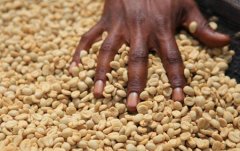Introduction of Coffee producing areas-- taste of Colombian Coffee
Colombia (Colombia)
Central and South America
Name of country: Republic of Colombia
Area: 1.1417 million square
Capital: Bogota
Language: Spanish
Annual output of coffee: about 744000 tons

Colombian coffee accounts for about 10 per cent of the world's coffee production, and about 2 million people in Colombia depend on coffee production for their livelihood. So for Colombia, coffee production plays a very important role in the national economy. Apart from Brazil and Vietnam, which rank first and second, Colombia is the third largest coffee producer in the world.
Aroma:
At first, Colombian coffee has the sweetness and mellow taste of coffee, as a result of the variety improvement project is very active, there has been a variety of coffee. In the world coffee market, Colombian coffee has become synonymous with soft coffee and has been highly regarded. Coffee beans are relatively large, green and long in shape. Due to their compact internal structure, they are suitable for deep roasting.
Variety:
Most of the coffee produced in Colombia belongs to Arabica, including Bobang, Kaddura, Tibica, Malaggippe and other varieties. Most of the classic Colombian coffee is Tibica and Kaddura.
Planting:
The main source of Colombian coffee is the northern Andes, an area full of fertile volcanic ash, bright sunshine, uniform precipitation and valley rivers that make it easy to wash coffee beans. rich water makes mellow coffee. The main producing areas are Medellin, Armenia and Manisales.
Clean:
Colombian coffee is mainly washed with water, and there is no special grading method. As long as the size exceeds the size 17 screen, and the number of this kind of coffee beans reaches more than 80%, it is called top coffee, and the size no more than the size 17 screen is called excellent coffee.
Important Notice :
前街咖啡 FrontStreet Coffee has moved to new addredd:
FrontStreet Coffee Address: 315,Donghua East Road,GuangZhou
Tel:020 38364473
- Prev

El Ataisi Coffee Manor introduces El Pacamara boutique coffee El Salvador
Introduction to Pacamara: Pacamara varieties are artificially cultivated varieties of Pacas and Maragogipe. It was first cultivated by researchers in El Salvador in 1958. Pacamara is an excellent variety under rare artificial breeding, which is better than blue, and perfectly inherits the advantages of the mother plant. It not only has the excellent taste of Pacas, but also inherits the big head of Maragogipe.
- Next

Costa Rican Tarazu Coffee production area introduces the roasting of Costa Rica San Roman Coffee processing Plant
Costa Rica Saint Roman processing Plant Royal Coffee Costa Rica San Ramon Royal Coffee country: Costa Rica Grade: SHB altitude: 1700m production area: Tara Pearl production area roasting degree: medium depth Baking treatment: washing treatment varieties: Kaddura, Kaduai processing Plant: Saint Roman processing Plant Flavor: berry, Caramel, Cream, Micro Flavor
Related
- Does Rose Summer choose Blue, Green or Red? Detailed explanation of Rose Summer Coffee plots and Classification in Panamanian Jade Manor
- What is the difference between the origin, producing area, processing plant, cooperative and manor of coffee beans?
- How fine does the espresso powder fit? how to grind the espresso?
- Sca coffee roasting degree color card coffee roasting degree 8 roasting color values what do you mean?
- The practice of lattes: how to make lattes at home
- Introduction to Indonesian Fine Coffee beans-- Java Coffee producing area of Indonesian Arabica Coffee
- How much will the flavor of light and medium roasted rose summer be expressed? What baking level is rose summer suitable for?
- Introduction to the characteristics of washing, sun-drying or wet-planing coffee commonly used in Mantenin, Indonesia
- Price characteristics of Arabica Coffee Bean Starbucks introduction to Manning Coffee Bean Taste producing area Variety Manor
- What is the authentic Yega flavor? What are the flavor characteristics of the really excellent Yejasuffi coffee beans?

